Text
0 notes
Text
FUKUSHIMA'S NUCLEAR EXPLOSION
We have traveled along all the world and its history and this is our last stop. The Fukushima's nuclear explosion. As known Fukushima is a district of Japan. Inside this district we find a village called Ōkuma, which is now a phantom village because of this explosion.
The Fukushima nuclear disaster, which unfolded in 2011, represents one of the most significant nuclear catastrophes in recent history. Triggered by a massive earthquake and tsunami, it led to a series of meltdowns at the Fukushima Daiichi Nuclear Power Plant in Japan. The aftermath of this event had far-reaching consequences, not only for Japan but also for the global nuclear industry and the broader understanding of nuclear safety and preparedness.
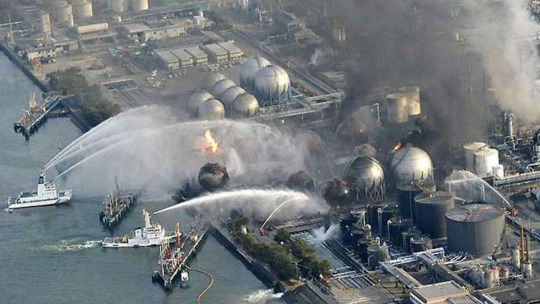
Japan is situated in a seismically active region, making it susceptible to earthquakes and tsunamis. The disaster was rooted in the historical context of Japan's vulnerability to natural disasters. The magnitude 9.0 earthquake and the subsequent tsunami in March 2011 severely damaged the Fukushima Daiichi Nuclear Power Plant, leading to the failure of cooling systems and fuel rod meltdowns. This event rekindled discussions on the safety of nuclear power in earthquake-prone areas and raised concerns about the adequacy of safety measures.

The Fukushima disaster involved numerous key figures, including Prime Minister Naoto Kan, who played a central role in coordinating the government's response and later questioned Japan's reliance on nuclear energy. Masao Yoshida, the plant's manager, emerged as a hero for his efforts to control the crisis. The nuclear industry, regulators, and TEPCO (Tokyo Electric Power Company), which operated the plant, also came under scrutiny.
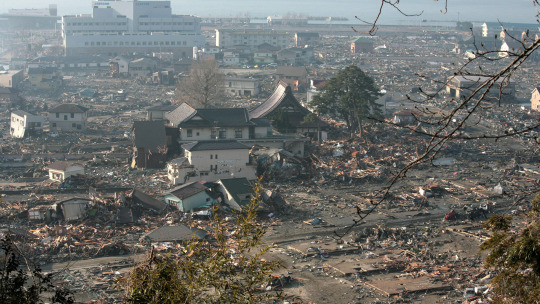
Water was of paramount importance in the Fukushima nuclear disaster. It served as a critical coolant for the damaged reactors, essential for preventing overheating and further fuel rod meltdowns. However, the extensive use of water resulted in a new challenge—massive quantities of contaminated water. The need to cool the reactors and mitigate the spread of radioactive materials necessitated the pumping of seawater into the reactors, leading to a significant buildup of radioactive water that had to be carefully managed and stored.

The Fukushima nuclear disaster had enduring consequences, both for Japan and the world. It led to a reevaluation of nuclear power's safety, particularly in regions prone to seismic activity. The event also highlighted the complex relationship between nuclear technology, natural disasters, and the role of water in cooling and decontaminating nuclear facilities. As the world faces ongoing challenges in energy production, nuclear safety, and disaster preparedness, the lessons from Fukushima continue to inform policy decisions, safety regulations, and disaster response strategies. The importance of water conservation and responsible water management practices emerged not only in the context of the disaster itself but also in the long-term efforts to mitigate the environmental impact of the radioactive water buildup at the Fukushima site.
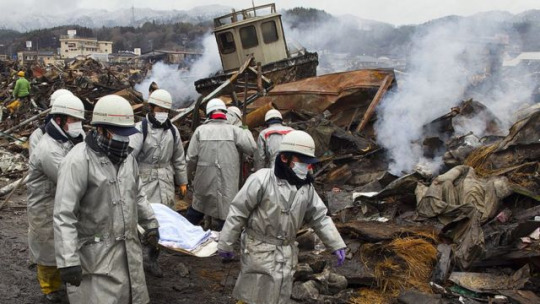
Bibliography
World Nuclear Association
Britannica
BBC
Aljazeera
0 notes
Text
MILWAUKEE, 1993
Milwaukee is a city in the State of Wisconsi, United States. This particular city had a terrible accident that changed their mind completely about their consumption of water, and how to prevent its contamination.
The Milwaukee cryptosporidium outbreak of 1993 stands as a stark reminder of the critical importance of water quality and public health safeguards. During the spring and summer of that year, the city of Milwaukee, Wisconsin, experienced one of the largest waterborne disease outbreaks in U.S. history, affecting hundreds of thousands of residents and causing numerous hospitalizations and fatalities. This crisis was characterized by the contamination of the city's treated drinking water with cryptosporidium, a microscopic parasite that can cause gastrointestinal illness. The event revealed significant shortcomings in the city's water treatment practices, prompting sweeping changes in water quality control and heightened awareness of waterborne diseases. In this context, we delve into the key figures, historical context, and lasting ramifications of the Milwaukee cryptosporidium outbreak of 1993.
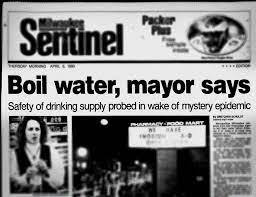
The Milwaukee cryptosporidium outbreak of 1993 unfolded in a historical context where waterborne diseases had long been a public health concern. It was a pivotal event that exposed vulnerabilities in water treatment practices and underscored the need for rigorous safeguards in the United States' water supply systems. The outbreak, originating from cryptosporidium contamination in Milwaukee's treated drinking water, led to a staggering impact on public health, causing numerous illnesses and deaths, primarily among individuals with compromised immune systems. In response, it triggered a significant overhaul of water treatment processes, with the adoption of advanced methods and improved water quality monitoring. The event served as a critical reminder of the ongoing challenge to provide safe and clean drinking water and furthered the awareness of waterborne disease prevention in the country.

Some key figures in the Milwaukee cryptosporidium outbreak of 1993 included Richard C. Meeusen, Superintendent of the Milwaukee Water Works, who led the city's response to the crisis, and Dr. Jeffrey P. Davis, a medical epidemiologist who investigated the outbreak and provided critical guidance on public health measures. The outbreak affected over 400,000 individuals, resulting in thousands of hospitalizations and at least 69 deaths. Additionally, numerous public health officials and experts at various levels of government played essential roles in addressing the outbreak and its causes, and the event led to significant legal and financial consequences, with compensation provided to those impacted by the outbreak's health effects.

The Milwaukee cryptosporidium outbreak of 1993 serves as a stark reminder of the critical importance of water conservation within the broader context of water management and public health. This crisis highlighted that responsible water use is integral to preserving clean water sources, reducing stress on water treatment facilities, enhancing water quality control, and reaping economic and environmental benefits. By embracing water conservation practices, communities can build resilience to future water-related challenges, particularly in the face of climate change and population growth. The outbreak underscores the profound connection between water quality, public health, and water conservation, emphasizing the need for sustainable and responsible water use to ensure safe and clean drinking water for all.
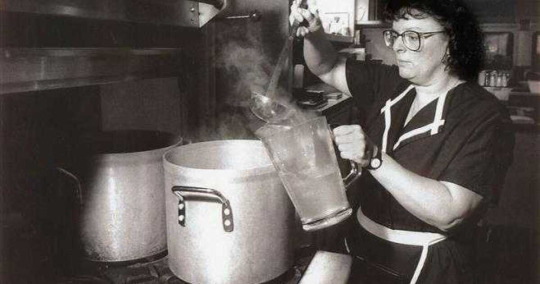
The Milwaukee cryptosporidium outbreak of 1993 left an indelible mark on the annals of public health and water treatment in the United States. This unprecedented crisis underscored the profound impact that water quality has on the well-being of communities. The outbreak served as a catalyst for significant improvements in water treatment processes and monitoring, leading to a heightened awareness of the need to safeguard public water supplies. Key figures such as Richard C. Meeusen and Dr. Jeffrey P. Davis played vital roles in managing the crisis and guiding the response. While this outbreak was a painful chapter in Milwaukee's history, it resulted in valuable lessons, legal settlements, and greater preparedness to prevent and address waterborne diseases. The legacy of the Milwaukee cryptosporidium outbreak endures, reminding us of the ongoing challenge to provide safe and clean drinking water and the vital importance of robust public health and water treatment systems.

Bibliography
Water quality & Health Council
National Library of Medicine
Encyclopedia of Milwaukee
Healio
The New England journal of Medicine
0 notes
Text
BOSTON TEA PARTY
I'm going to tell you about my favorite historic event of all times: The Boston Tea Party. Here is kind of a summary of all this event that happened when USA was still colonies under British rule.
The Boston Tea Party, a defining moment in American history, took place during the turbulent late 18th century when the American colonies were increasingly at odds with British rule. The crux of the issue lay in the frustration of American colonists over British taxation without representation, a grievance that had been brewing for years. In this context, the Tea Act of 1773 emerged as the catalyst that ignited the flames of rebellion. Designed to shore up the struggling British East India Company and perpetuate the unjust principle of taxation without representation, the Tea Act was the proverbial last straw. On the night of December 16, 1773, American colonists, their identities cunningly concealed as Native Americans, boarded British vessels in Boston Harbor. In an act of audacious defiance, they cast 342 chests of British tea into the harbor's depths, an event that would go down in history as the Boston Tea Party. This brazen act marked a critical juncture in the relentless march toward revolution, ultimately laying the groundwork for the birth of the United States.

The Boston Tea Party was, at its core, a direct response to the deeply rooted grievances of the American colonists. It unfolded in the midst of growing discontent with British rule, stemming from a sense of injustice over the imposition of taxes and trade regulations designed to finance the sprawling British Empire. The Tea Act of 1773 served as the flashpoint. This act granted the British East India Company an exclusive monopoly on tea sales in the American colonies, simultaneously undercutting the price of British tea while upholding the practice of taxation without representation. In an act of protest and defiance, American colonists, shrouded in Native American disguises, took matters into their own hands by boarding British ships and disposing of the taxed tea in Boston Harbor on that fateful night of December 16, 1773. The consequences were not limited to the destruction of valuable tea; they extended to the escalation of tensions between the American colonies and the British crown.
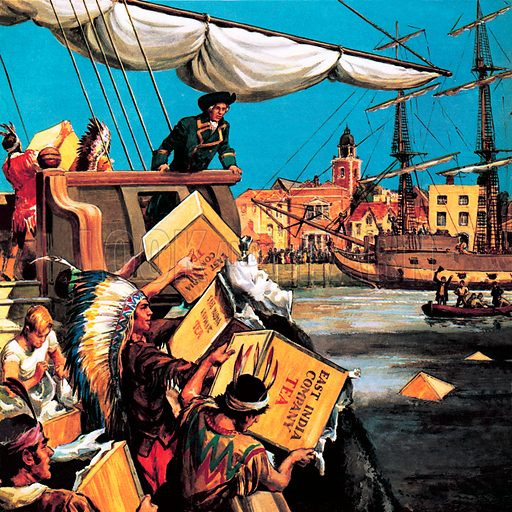
The British response to the Boston Tea Party was swift and severe. In 1774, they enacted the Coercive Acts, often referred to as the Intolerable Acts by the American colonists. These acts aimed to suppress colonial resistance, and they included the closure of the port of Boston, the strengthening of British military control, and the suspension of self-governance in Massachusetts. Far from quelling the spirit of rebellion, these punitive measures only fanned the flames of resistance. The Boston Tea Party, in essence, served as a stepping stone to the American Revolution.
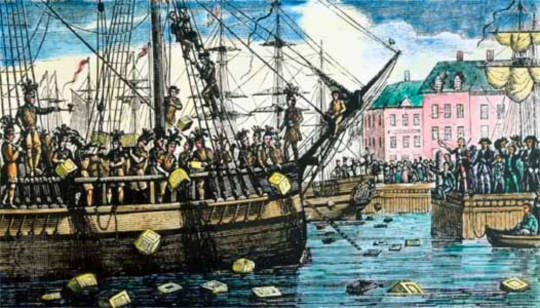
The consequences of the Boston Tea Party extended beyond the 18th century and continue to reverberate in the modern age. This historic event, while not directly impacting water use, has influenced contemporary discussions about environmental stewardship and water management. The Boston Tea Party, in the broader context of American history, has been used as a reference point to highlight the importance of safeguarding water resources. It reminds us that human actions can affect the environment and the quality of water bodies. This historical episode has contributed to a heightened awareness of water pollution and environmental concerns. In the modern era, it has become emblematic of the significance of environmental regulations, the importance of water conservation, and the necessity of protecting water resources.
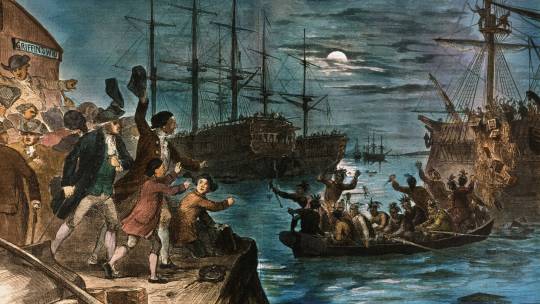
In conclusion, the Boston Tea Party remains an iconic and pivotal event in American history, emblematic of the colonial resistance against British rule and unjust taxation. It was a critical catalyst for the American Revolution, ultimately leading to the birth of the United States. While not directly related to water use, it has indirectly influenced modern discussions about environmental conservation and the importance of preserving water resources. This historical episode serves as a reminder that our actions can impact the environment, contributing to the broader understanding of the significance of clean and safe water in contemporary society.

Bibliography
Massachussetts Historical Society
Khan Academy
Britannica
Boston Tea Party#1
Boston Tea Party#2
0 notes
Text
Every drop counts
The poem "Every drop counts" written by Deveshi Hans highlights the critical importance of water as a vital resource and the need for its preservation and conservation. The poem emphasizes that water is essential for life and is used for various purposes, but pollution and negligence can lead to water-related diseases. It describes the natural water cycle and the continuous flow of water. The poem encourages awareness and action, such as rainwater harvesting, afforestation, and sprinkler irrigation, as methods to conserve and protect this precious resource for the benefit of future generations.

In this poem, water serves as a multifaceted symbol. It represents life and vitality, emphasizing its indispensable role as a vital resource for all living beings. Water also symbolizes cleanliness and health, warning against pollution and the risk of waterborne diseases. The poem's depiction of the water cycle underscores its perpetual and cyclical nature, highlighting that it cannot be created or destroyed but only reused. Most significantly, water symbolizes the urgent need for conservation and responsible resource management, promoting practices like rainwater harvesting and afforestation to ensure a sustainable and healthy future for all.

Finally, conveys a powerful message about the critical value of water and the responsibility of individuals to preserve this life-sustaining resource. It emphasizes the importance of cleanliness, health, and the need for responsible resource management, warning against pollution and the resulting waterborne diseases. The poem advocates for the conservation of water, promoting practices like rainwater harvesting and afforestation, to ensure sustainability for future generations. It underscores the role of awareness and education in fostering a sense of duty and promoting collective action in safeguarding this precious resource. In essence, the poem's message is a call to appreciate, protect, and conserve water as an essential element of life, while recognizing the profound impact of individual actions on a sustainable and healthy future.
0 notes
Text
The convenant of water
In the story, a young bride in early 20th-century Travancore adapts to her new life and family, grappling with tradition, transition, and hidden family secrets. The key characters include the unnamed bride, her groom, the cook Thankamma, the grandmother, and JoJo, the bride's son. Water, symbolically used, represents themes of change and isolation as the bride traverses through rivers during significant life transitions. It also symbolizes her newly acquired identity as a married woman when her husband ties a gold necklace around her neck near water. Water is intertwined with family history and conflict as it connects to a secret pattern of male deaths by drowning.

While the story doesn't explicitly convey a singular message, it invites contemplation on the intricacies of family dynamics, tradition, and the impact of hidden truths on individual lives. The message the story tries to convey is the traditions, family, identity, and secrets. The narrative delves into the experiences of the central character as she navigates the transition into married life and the discovery of her husband's family history. The story touches on the importance of storytelling, cultural norms, and the impact of family secrets on individual lives. While the story may not have an overt or singular message, it likely encourages readers to contemplate the complexities of family dynamics, the weight of tradition, and the consequences of hidden truths within a family's history. The interpretation of any overarching message may vary from reader to reader.

0 notes
Text
The rain knows why
In the story “The rain knows why” a story written by María Fernanda Heredía, who is an ecuadorian writer. Is one of my favorite books of all time. It is kind of a strong book because it tells the story of 2 kids. One named Lucia, and the other named Antonio. Both of them suffer from different types of abuse. Lucia is bullied by her so-called friends that take a photo of her while being in a pj party. Antonio, on the other hand, is abused by his uncle. Not only physically but verbally as well. But both of them find peace in a class of jewelry, and it is in this class where they meet each other.

Casually it is the rain that reflects their problems, what they should do about them and what to do to stop them. In this story is a plus in the plot, because it constantly appears where they fell alone, enraged, or like life doesn’t have a meaning anymore. It shows itself as a counselor for both of them, and is the one that shows them that they aren’t alone. That they have an escape to all those problems, and they need to be brave. In this case, I think that the author’s message in this story is the understanding about the problems that tennagers have. That the abuses don’t only occur to adults, and how suppressing those problems can make those kids live’s more miserable.

0 notes
Text
Laggon Data

Stories you should definetily read about water
"The rain knows why"
The covenant of water
Every drop counts

Historic Events that have affected water
Boston Tea Party
Milwaukee, 1993
Fukushima
0 notes
Text

Water has memory
Mision
To make consience about how we need to protect and reserve all water in the world.
Vision
For us, humans, to preserve water with a variety of factors and arguments with the why to do it.
Value
Show more awareness, by taking care of the water with the school's community.
0 notes
Text
How did I save water yesterday?
On my monday I just spent in my house. We order take out because we where vey tired to do somenthing around the house. We order some roasted meat. It was delicious, and because of how tired we were we didn't take the food out of the take out containers so we didn't use water for that and we stored what we didn't eat so we ate it at night.

1 note
·
View note